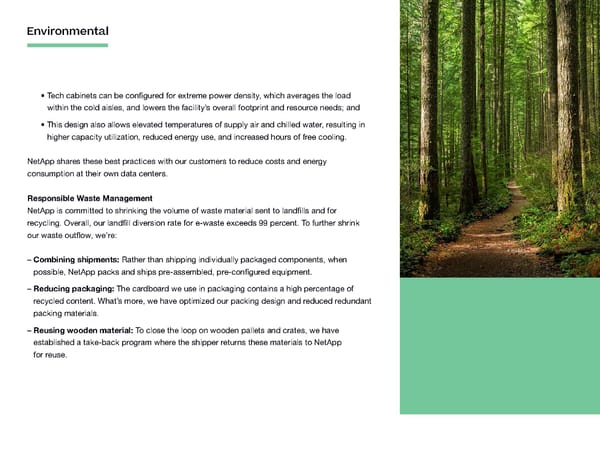Environmental • Tech cabinets can be configured for extreme power density, which averages the load within the cold aisles, and lowers the facility’s overall footprint and resource needs; and • This design also allows elevated temperatures of supply air and chilled water, resulting in higher capacity utilization, reduced energy use, and increased hours of free cooling. NetApp shares these best practices with our customers to reduce costs and energy consumption at their own data centers. Responsible Waste Management NetApp is committed to shrinking the volume of waste material sent to landfills and for recycling. Overall, our landfill diversion rate for e-waste exceeds 99 percent. To further shrink our waste outflow, we’re: – Combining shipments: Rather than shipping individually packaged components, when possible, NetApp packs and ships pre-assembled, pre-configured equipment. – Reducing packaging: The cardboard we use in packaging contains a high percentage of recycled content. What’s more, we have optimized our packing design and reduced redundant packing materials. – Reusing wooden material: To close the loop on wooden pallets and crates, we have established a take-back program where the shipper returns these materials to NetApp for reuse. 32
 ESG Report | NetApp Page 32 Page 34
ESG Report | NetApp Page 32 Page 34